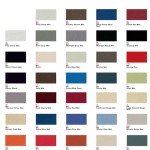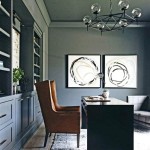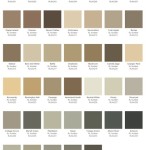Best Colors To Paint Inside Of House
Selecting the optimal paint colors for the interior of a house is a multifaceted process influenced by personal preferences, the specific characteristics of each room, and desired ambiance. Color significantly impacts mood, perception of space, and overall aesthetic appeal. Therefore, a thoughtful approach to color selection is crucial for creating a harmonious and comfortable living environment. This article will explore several factors to consider when choosing interior paint colors, highlighting some consistently popular and versatile options.
Before delving into specific color recommendations, it is important to understand the fundamental principles of color theory. Hue refers to the pure color, such as red, blue, or green. Saturation describes the intensity of the color, ranging from dull to vibrant. Value, or lightness, relates to how light or dark a color appears. These three attributes work together to define and differentiate colors. Understanding these concepts allows for a more informed decision-making process when selecting paint colors for the interior of a house.
Another crucial consideration is the amount of natural light a room receives. South-facing rooms typically receive warm, bright light throughout the day, which allows for a wider range of color options, including darker and cooler shades. North-facing rooms, on the other hand, tend to have cooler, dimmer light, which often benefits from lighter, warmer colors to brighten the space. East-facing rooms receive warm light in the morning and cooler light in the afternoon, while west-facing rooms experience the opposite. Taking these lighting variations into account ensures that the chosen colors appear as intended throughout the day.
The purpose of each room should also influence color selection. Bedrooms, for example, typically benefit from calming and relaxing colors, such as soft blues, greens, or neutrals. Living rooms, where social interaction and entertainment take place, may accommodate more vibrant and stimulating colors, such as warm reds, oranges, or yellows, or sophisticated neutrals with bold accents. Kitchens often benefit from bright and clean colors, such as whites, creams, or light blues and greens. Bathrooms, frequently smaller spaces, can feel more spacious and airy with light and reflective colors.
Understanding Neutral Color Options
Neutral colors, including whites, grays, beiges, and creams, remain consistently popular choices for interior paint due to their versatility and ability to serve as a backdrop for various decorating styles. White, in particular, is a timeless option that creates a clean and bright atmosphere. However, it is essential to consider the undertones of white paint, as some whites may have warm (yellow or orange) undertones, while others may have cool (blue or gray) undertones. Choosing a white that complements the room's lighting and existing furnishings is crucial.
Gray has emerged as a sophisticated and contemporary neutral, offering a wide range of shades from light to dark. Light grays can create a calming and serene atmosphere, while darker grays can add depth and drama. Like white, gray also has undertones that can influence its appearance. Warm grays, sometimes referred to as "greiges," have warmer undertones of brown or beige, while cool grays have cooler undertones of blue or green. Selecting the appropriate gray undertone ensures that the color harmonizes with the other elements in the room.
Beige and cream are classic neutral options that provide warmth and comfort. These colors can create a cozy and inviting atmosphere, particularly in living rooms and bedrooms. Beige offers a slightly more grounded and earthy feel compared to cream, which tends to be lighter and more airy. Both beige and cream are versatile and can be paired with a wide range of accent colors.
When using neutral colors, it is important to consider adding texture and visual interest through other elements, such as furniture, artwork, and accessories. Using different sheens of paint, such as matte for walls and semi-gloss for trim, can also add subtle dimension to a neutral color scheme.
Exploring Calming and Relaxing Color Palettes
For bedrooms and other spaces designed for relaxation, colors that promote tranquility and calmness are ideal. Blues, greens, and purples are often associated with serenity and nature, making them excellent choices for creating a restful atmosphere. Light to medium shades of these colors tend to be more conducive to relaxation than darker, more saturated hues.
Soft blues are particularly effective in promoting a sense of peace and tranquility. Light blue evokes the feeling of a clear sky or calm ocean, fostering a sense of openness and serenity. Different shades of blue can evoke different moods. A pale powder blue can create a delicate and airy atmosphere, while a slightly deeper cerulean blue can add a touch of sophistication. Blue pairs well with other cool colors, such as greens and grays, as well as warm neutral colors like beige and cream.
Greens are another excellent choice for creating a calming and natural environment. Green is associated with growth, renewal, and balance, making it a versatile color for various rooms in the house. Soft greens, such as seafoam green or sage green, can create a soothing and refreshing atmosphere in bedrooms and bathrooms. Olive green can add a touch of sophistication and warmth to living rooms or dining rooms.
Light purples, such as lavender or lilac, can also create a calming and whimsical atmosphere. Purple is often associated with creativity and spirituality, making it a good choice for spaces where relaxation and introspection are desired. Light purples pair well with other pastel colors, as well as neutral colors like white and gray.
When using calming colors, it is important to consider the overall balance of the room. Avoid using too many colors, as this can create a sense of chaos and overwhelm. Instead, focus on creating a cohesive color scheme with a few carefully chosen accent colors.
Considering Bold and Vibrant Color Options
For those seeking to make a statement and inject energy into their living spaces, bold and vibrant colors can be an excellent choice. Reds, oranges, and yellows are warm and stimulating colors that can create a sense of excitement and passion. However, it is important to use these colors judiciously, as they can be overwhelming if used in large quantities.
Red is a powerful and energetic color that can evoke feelings of passion, excitement, and warmth. Red is often used as an accent color in living rooms and dining rooms, adding a touch of drama and sophistication. However, red can also be used as a wall color in smaller spaces, such as hallways or bathrooms, to create a bold and impactful statement. It is vital to consider the shade and undertones of the red. A deep, rich crimson can feel luxurious, while a brighter, fiery red can feel more energetic and playful.
Orange is a warm and inviting color that can evoke feelings of happiness, optimism, and creativity. Orange is a good choice for kitchens and dining rooms, as it can stimulate the appetite and promote social interaction. Lighter shades of orange, such as peach or apricot, can create a more subtle and calming effect. Like red, the undertone of the orange is important. A burnt orange will have a brown base to it and be warmer, while a brighter orange will be more vibrant.
Yellow is a cheerful and uplifting color that can evoke feelings of joy, sunshine, and optimism. Yellow is a good choice for rooms that lack natural light, as it can help to brighten the space and create a sense of warmth. However, yellow can also be an overwhelming color if used in large quantities, so it is important to use it sparingly or in lighter shades. To tone down a vivid yellow, pair it with neutral colors.
When using bold and vibrant colors, it is important to consider the other elements in the room, such as furniture, artwork, and accessories. Neutral colors can help to balance out the intensity of the bold colors and prevent the room from feeling too overwhelming.
Ultimately, the best colors to paint the inside of a house are those that resonate with the homeowner's personal preferences and complement the specific characteristics of each room. Careful consideration of color theory, lighting conditions, and room purpose will ensure that the chosen colors create a harmonious and comfortable living environment. Experimentation with color samples and consultation with interior design professionals can further refine the selection process and achieve optimal results.

The 5 Best Interior Paint Colors For Feeling Refreshed And Relaxed Metzler Home Builders

The Best Fresh Warm Neutral Paint Colors For Your Home Perfecting Places

How To Pick The Best Paint Colors For Your Whole House Lantern Lane Designs

What S The Best Paint Color For Ing A House Discover Spring

51 Best Bedroom Paint Color Ideas For 2024

Best Interior Paint Colors Whole House Color Scheme Abby Organizes

The Best Light Gray Paint Colors For Walls

Best Paint Colors For Home Staging Interior Exterior

How To Choose Interior Paint Colors For Your House Tips America S Best Plans Blog

Top Paint Colors To A House Jefferson County Real Estate Shine Realty
Related Posts








